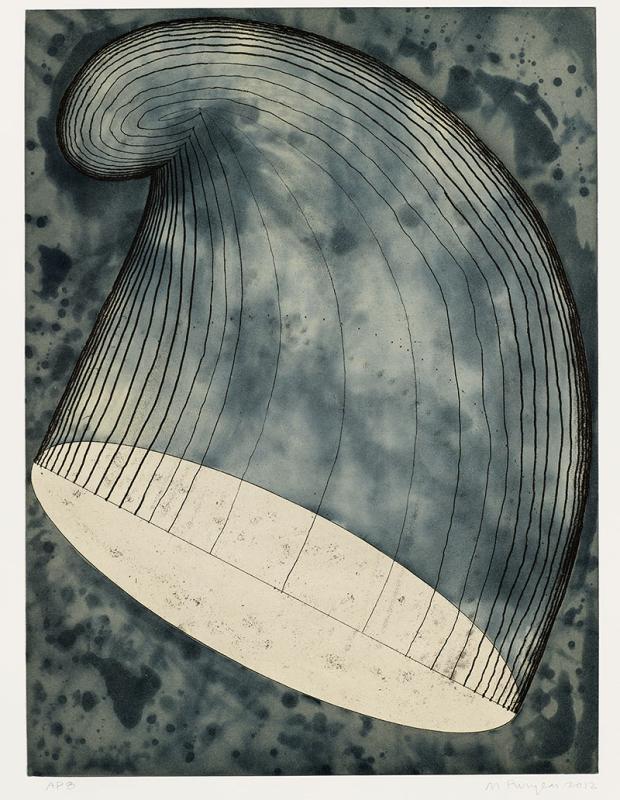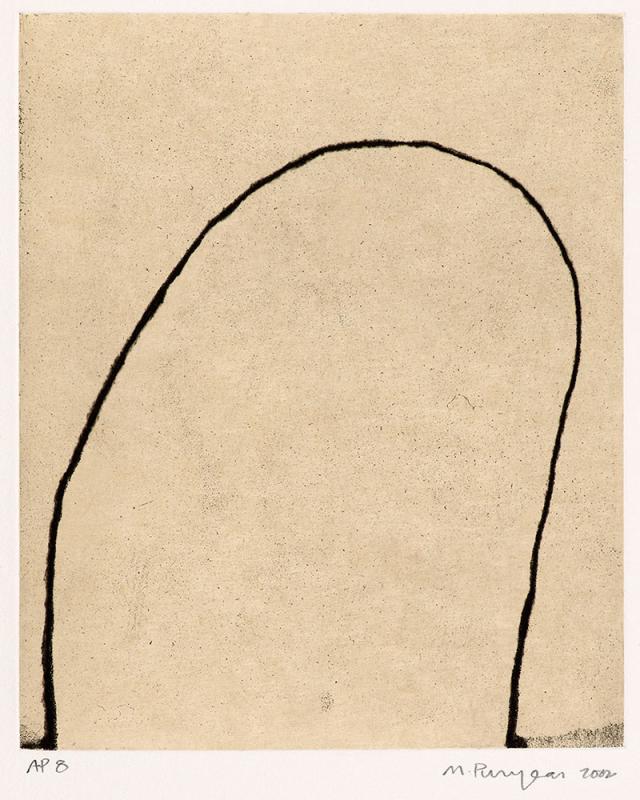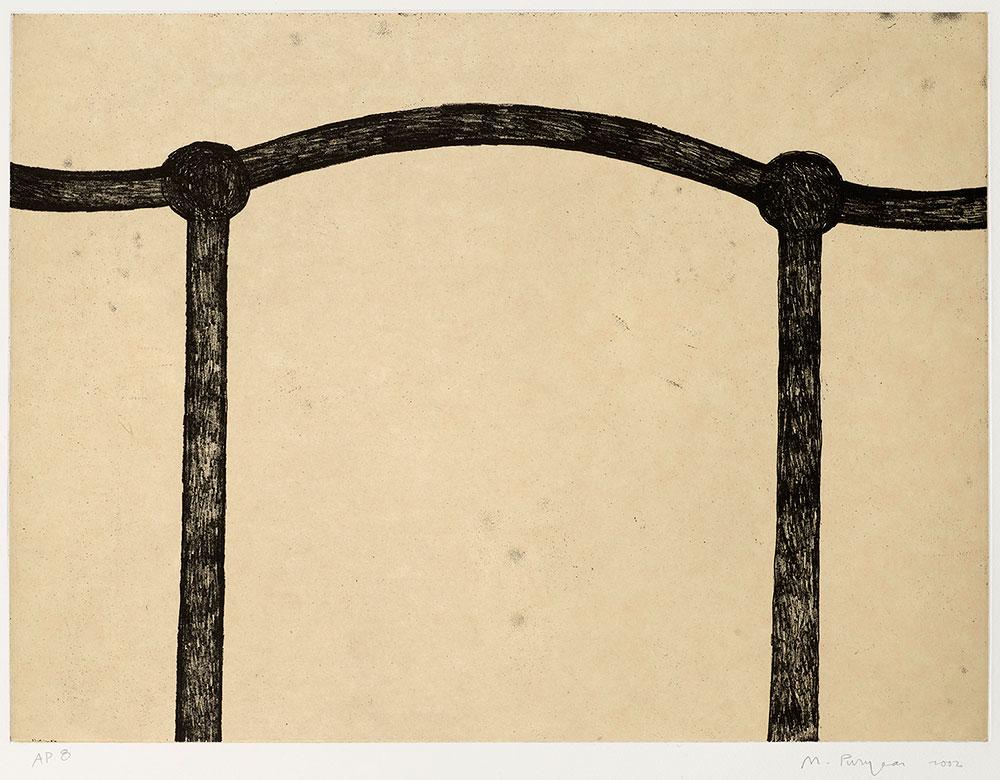In January 2021, the Morgan acquired an exceptional group of twenty prints by Martin Puryear. Made between 2001 and 2014 at Paulson Bott Press, Berkeley, CA, they represent nearly all the prints Puryear made during the first fifteen years of the 21st century and include several of his most important works in this medium. Known primarily as a sculptor, Puryear is celebrated for the elegance and refinement of his largely handmade constructions. The same qualities apply to his prints, which he creates with a similar attention to craft and technical precision.
Born in 1941 in Washington, DC, Puryear studied biology before turning to art. Two years with the Peace Corps in Sierra Leone in the mid-1960s were critical to his development. For this African American, “to be able to live in West Africa and experience a tribal culture firsthand was priceless,” Puryear said later. Living among woodworkers, weavers, and potters deepened his devotion to craft. His experience in West Africa inspired the first etchings Puryear made when studying printmaking at the Royal Swedish Academy of Arts in Stockholm in the late 1960s.
Around 1999, after a hiatus of thirty years, Puryear went back to printmaking and, in 2001, began working with Paulson Bott Press. Drawn to the most tactile of the print processes, Puryear explored a range of techniques combining etching and aquatint. His love of experimentation led him to try out ideas to create different textures, for instance sprinkling sand or salt onto the copper plate to produce atmospheric effects. He frequently relied on the chine collé technique, whereby a thin silky sheet of paper (chine) is laid down to a primary support sheet during printing. The chine creates a subtle backdrop to the printed image by differentiating it from the paper margins around it. Its texture also gives a dense, velvety quality to the blacks. In several cases Puryear created variants of the same print, exploring the properties of different materials and tools to make subtle adjustments and achieve heightened effects.
The motifs of the Paulson Bott prints recall themes Puryear developed in his sculptures. “I try to make works about the ideas in the sculpture without making images of the sculptures,” he said. While his forms elude specific identification, they evoke the human head, vessels, baskets, arches, and, in more recent works, the Phrygian cap. All of these objects take on symbolic resonance as they conjure up concepts such as freedom and shelter. Returning periodically to the same subjects Puryear has described his development as “linear in the sense that a spiral is linear. I come back to similar territory at different times.” In 2015, the Morgan presented the exhibition, Martin Puryear: Multiple Dimensions, which explored the relationships between prints, drawings, and sculpture in his art.
The Morgan acquired the prints from Renée Bott, co-founder of Paulson Bott Press, who, as a master printer, worked closely with Puryear in the creation of these works. The acquisition was made possible by a generous anonymous gift in honor of Morgan trustee, Katharine J. Rayner.
Isabelle Dervaux
Acquavella Curator and Department Head, Modern & Contemporary Drawings
The Morgan Library & Museum



